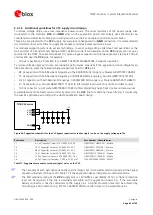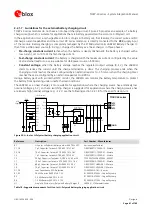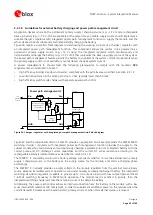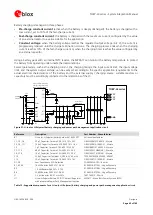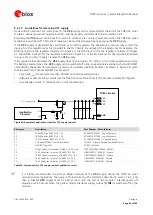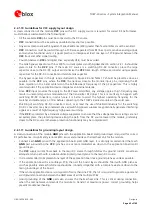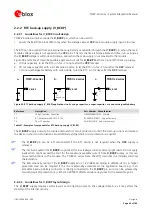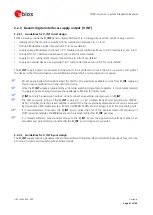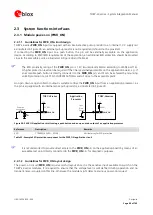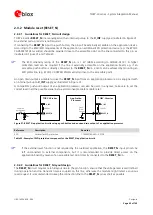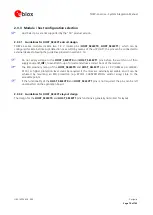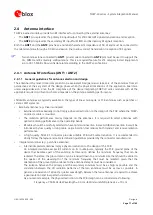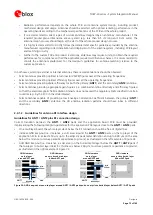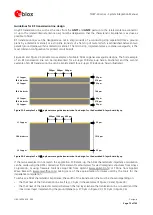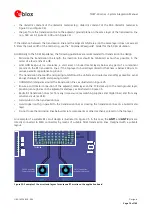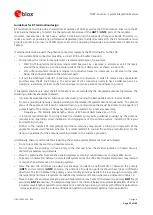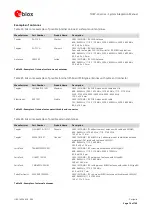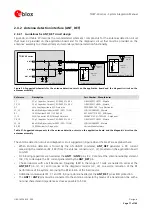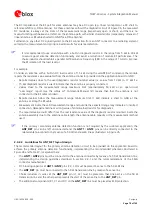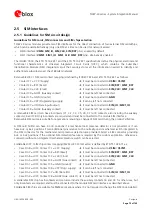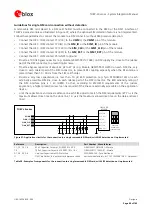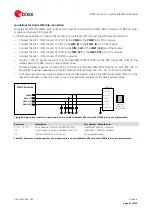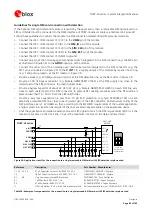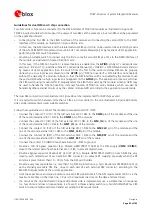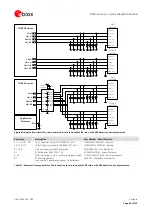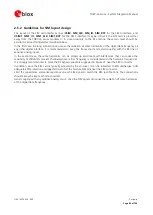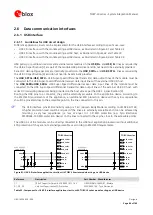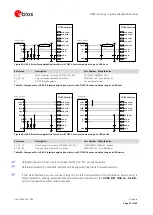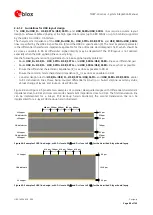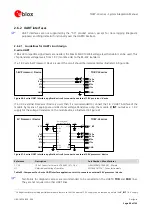
TOBY-L4 series - System Integration Manual
UBX-16024839 - R04
Design-in
Page 74 of 143
the dielectric constant of the dielectric material (e.g. dielectric constant of the FR-4 dielectric material in
Figure 33 and Figure 34)
the gap from the transmission line to the adjacent ground plane on the same layer of the transmission line
(e.g. 500 µm in Figure 33, 400 µm in Figure 34)
If the distance between the transmission line and the adjacent GND area (on the same layer) does not exceed
5 times the track width of the micro strip, use the “Coplanar Waveguide” model for the 50
calculation.
Additionally to the 50
impedance, the following guidelines are recommended for transmission line design:
Minimize the transmission line length: the insertion loss should be minimized as much as possible, in the
order of a few tenths of a dB.
Add GND keep-out (i.e. clearance, a void area) on buried metal layers below any pad of a component
present on the RF transmission lines, if the top-layer to buried layer dielectric thickness is below 200 µm, to
reduce parasitic capacitance to ground.
The transmission lines width and spacing to GND must be uniform and routed as smoothly as possible: avoid
abrupt changes of width and spacing to GND.
Add GND stitching vias around the transmission lines, as illustrated in Figure 35.
Ensure a solid metal connection of the adjacent metal layer on the PCB stack-up to the main ground layer,
providing enough vias on the adjacent metal layer, as illustrated in Figure 35.
Route RF transmission lines far from any noise source (as switching supplies and digital lines) and from any
sensitive circuit (as USB).
Avoid stubs on the transmission lines.
Avoid signal routing in parallel to the transmission lines or crossing the transmission lines on a buried metal
layer.
Do not route the microstrip lines below discrete components or other mechanics placed on the top layer.
An example of a suitable RF circuit design is illustrated in Figure 35. In this case, the
ANT1
and
ANT2
pins are
directly connected to SMA connectors by means of suitable 50
transmission lines, designed with a suitable
layout.
SMA Connector
Primary Antenna
SMA Connector
Secondary Antenna
TOBY-L4
Figure 35: Example of the circuit and layout for antenna RF circuits on the application board

